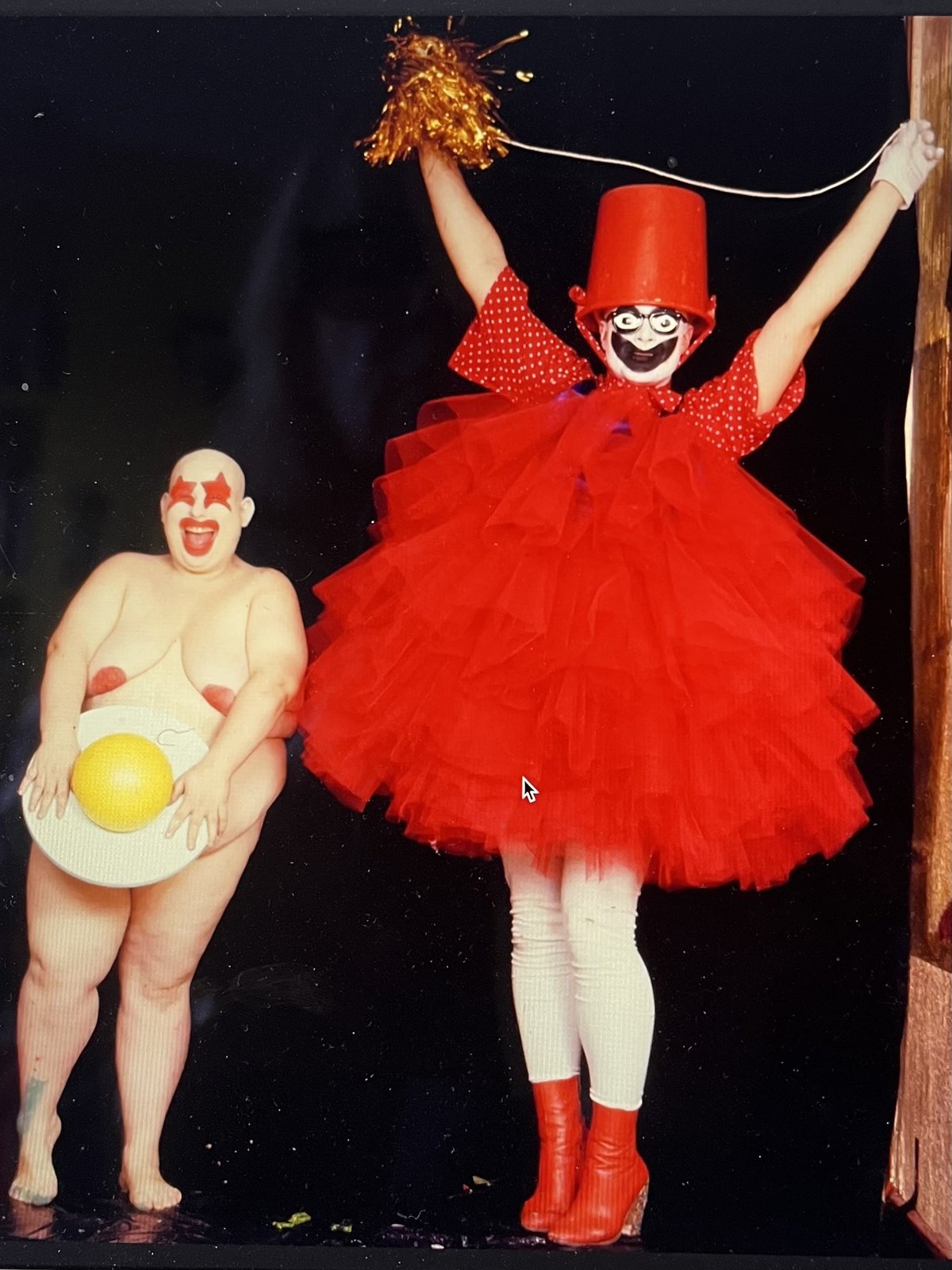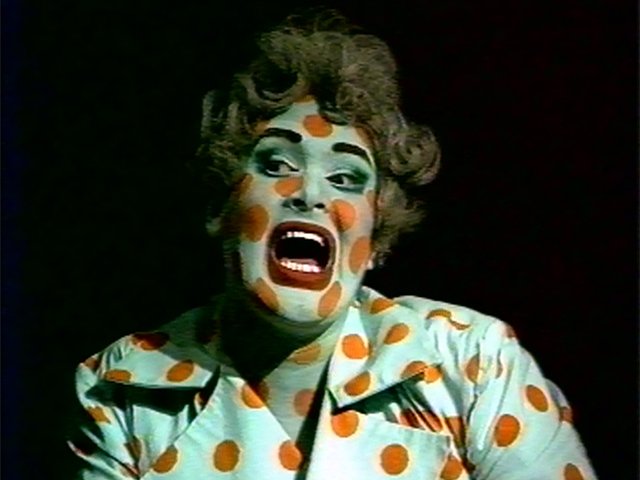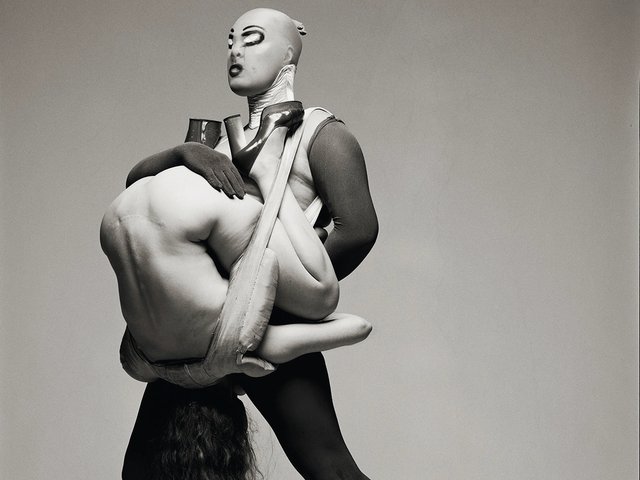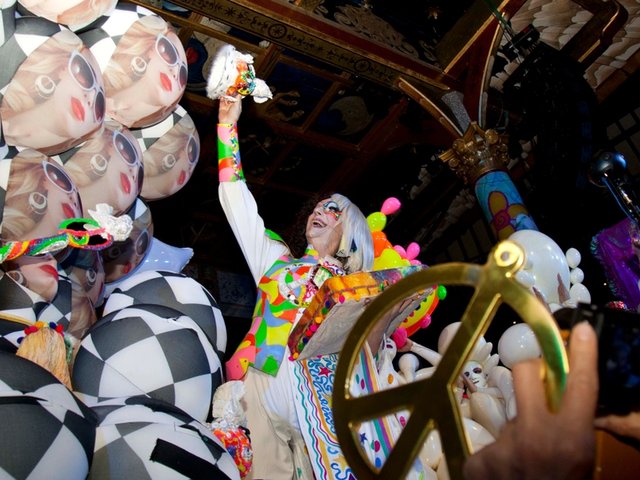My first encounter with Leigh Bowery was in 1984 at Christine Binnie’s Hail Mary club night, held in the crypt of St Mary Magdalene Church, near Regent’s Park, London. He was impossible to miss. Face and arms painted an intense blue, with dramatic black brows and glittering chains looping from a large nostril ring, he resembled a vast Hindu deity looming above the crowd. A towering jewel-encrusted leather cap and full-length fun fur coat made him even more imposing.
Later, in a side cloister, he enacted a performance with his soulmate and muse, Trojan, involving syringes, flames and the drinking of urine. But it was the queer glam Krishna look that made a lasting impression. And it set the tone for every other sighting of Leigh made over the next decade: a massive presence in every sense, he dominated his surroundings and dramatically altered his appearance to provoke reactions and confound expectations.
His one constant was a fascination with the body, which he used as subject, object and place for performance
Despite his tragically short life—he died from an Aids-related illness on 31 December 1994 aged just 33—this strapping 6ft 3in native of Sunshine, Melbourne, had a huge impact on the cultural life of London and beyond. Variously described as a fashion designer, human sculpture, club monster, monument of our times—and much more, often unprintable—he himself rejected any categorisation. His one constant was a fascination with the body, which he used as subject, object and place for performance, and especially as a means to challenge norms and conventions.
Now this literal shapeshifter is being comprehensively celebrated. Outlaws: Fashion Renegades of 80s London is at the Fashion and Textile Museum until 9 March, there’s a major Tate Modern survey Leigh Bowery! (27 February-31 August), and he’s the subject of an anecdote-packed Thames & Hudson biography from his friend Sue Tilley.
Dance, life modelling… and childbirth
Whether he was cavorting in outlandish garb at his legendary club night Taboo, designing for (and appearing in) the dance works of Michael Clark, life modelling for Lucian Freud, messily “birthing” his future wife Nicola Bateman, the Bowery, or gigging with his band Minty; manifestations proliferated as he grappled with the acceptable limits of clothes, sculpture and performance. Often these limits were pushed to breaking point. I was very relieved not to be in the audience at Brixton’s Fridge nightclub when Leigh used an enema to turn himself into a human fountain.
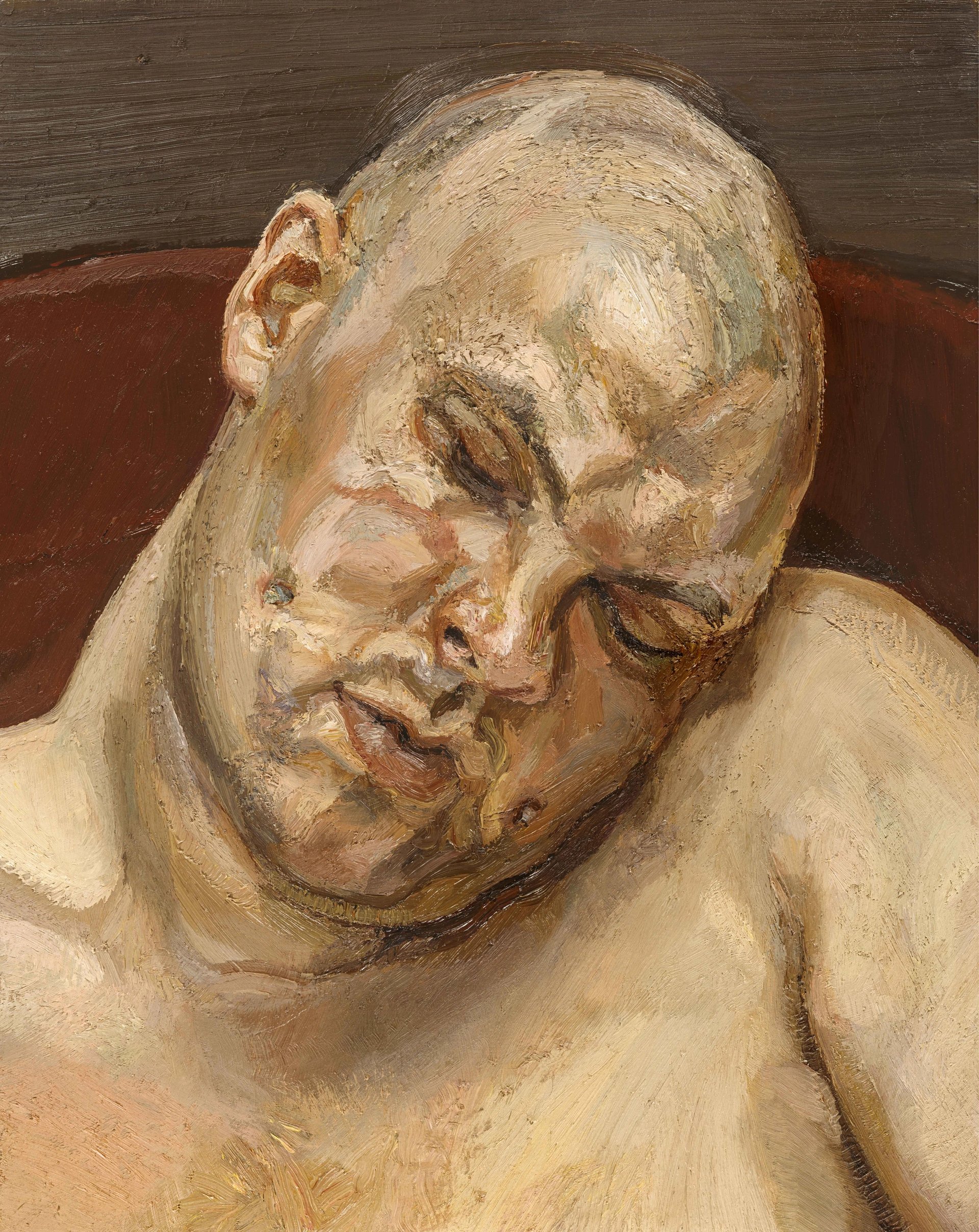
Lucian Freud, Leigh Bowery (1991) © The Lucian Freud Archive. All Rights Reserved 2024
Undoubtedly a one-off, Bowery nonetheless did not emerge out of a vacuum. His radical vision would not have been possible without a close and unique network of creative clubland mavericks who abetted and inspired him and each other. As well as now well-known figures such as Clark, Boy George, the filmmaker John Maybury and the artist Cerith Wyn Evans, other crucial kindred spirits included the provocative DJ-designer Rachel Auburn and the high-glam design double act of my former flatmates Dean Bright and the corsetier Mr Pearl. Club nights at Taboo and beyond were often punctuated by the body-painted, bodily fluid performances of the Neo Naturists, with revellers decked out in the fetishistic fashions of Juliana Sissons, Pam Hogg and David Cabaret, and the scavenged flotsam jewellery of Judy Blame, to name but a few.
Presiding over this rich and multifarious milieu was the artist-impresario Andrew Logan, a figure whose key role in shaping several generations of cross-disciplinary creativity needs proper institutional acknowledgment. For more than half a century this benign Lord of Misrule has blazed a trail in his use of glamour as a stealth weapon to play with and off notions of taste, value and beauty—by making sculpture and jewellery from shattered mirrors and recycled junk and most notably by mounting his all-embracing, boundary-blurring Alternative Miss World extravaganzas.
These spectacles—the first held in 1972 in a disused factory in Hackney, and the most recent at Shakespeare’s Globe Theatre in 2022—have acted as beacons of inclusivity, encompassing every permutation of gender, sexuality, ethnicity and social status, and united by a love of glitz and gorgeousness. Past judges include David Hockney, Divine, Grayson Perry—a former contestant—and Zandra Rhodes, who always makes the female half of Logan’s dual-gender master/mistress of ceremonies costume.
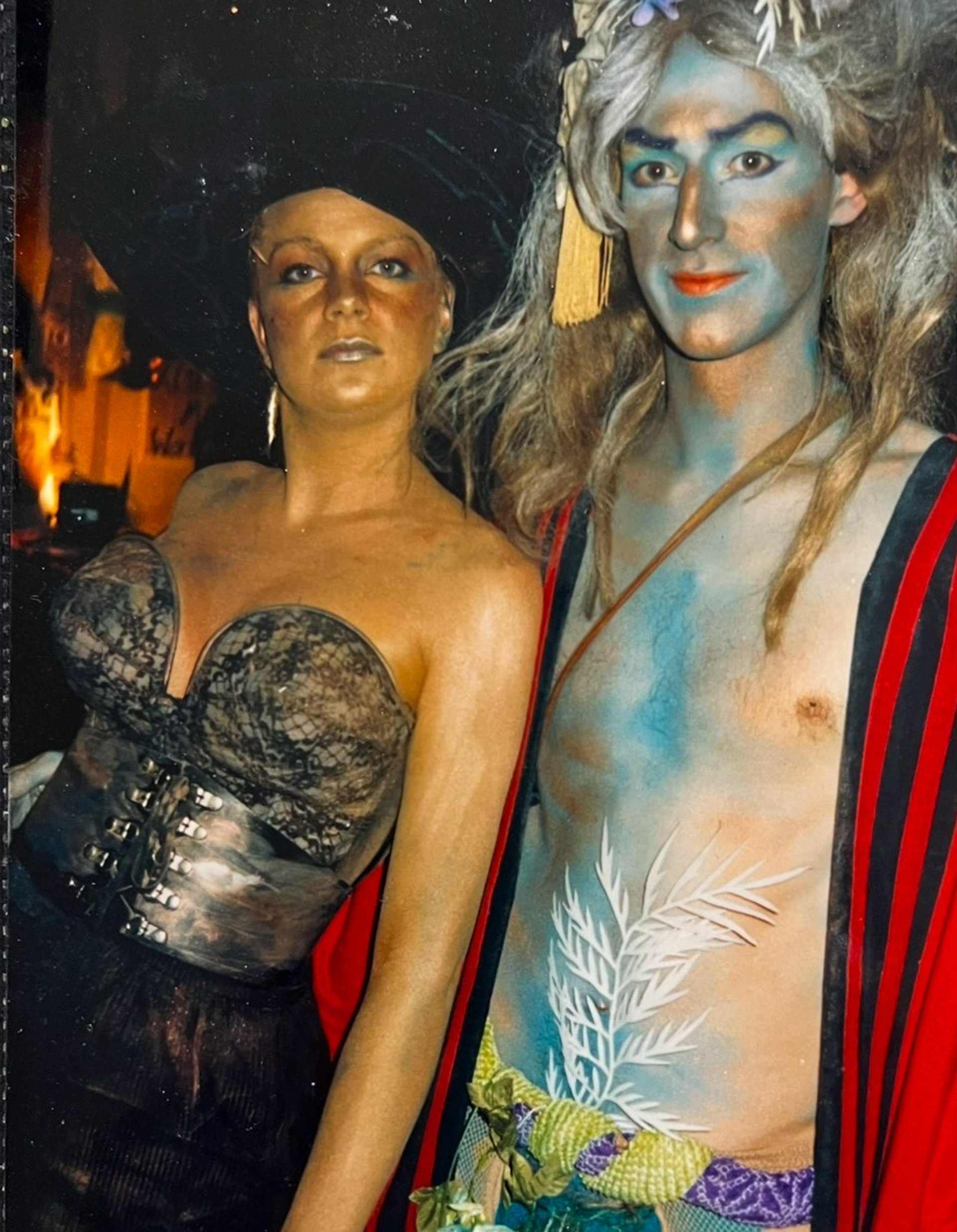
The Art Newspaper’s contemporary art correspondent Louisa Buck with the dancer Michael Hawkins—who at the time was working with Michael Clark— at the 1986 Alternative Miss World event
Courtesy of Louisa Buck
It was at the 1981 AMW that Bowery, recently arrived in the UK and a Burger King employee, got his introduction to the London scene—he’d spotted an advertisement in Time Out and bought a ticket. Here he found his tribe and never looked back.
By the time I witnessed his explosive entry onto the 1986 AMW stage as Miss Fuckit, sporting voluminous layers of red netting, a massive black-painted grin and a bucket on his head, he had well and truly arrived. But let’s not forget that many helped him on his way. Logan is still with us—can we now see him in the Tate too, please?
• Leigh Bowery!, Tate Modern, London, 27 February-31 August


